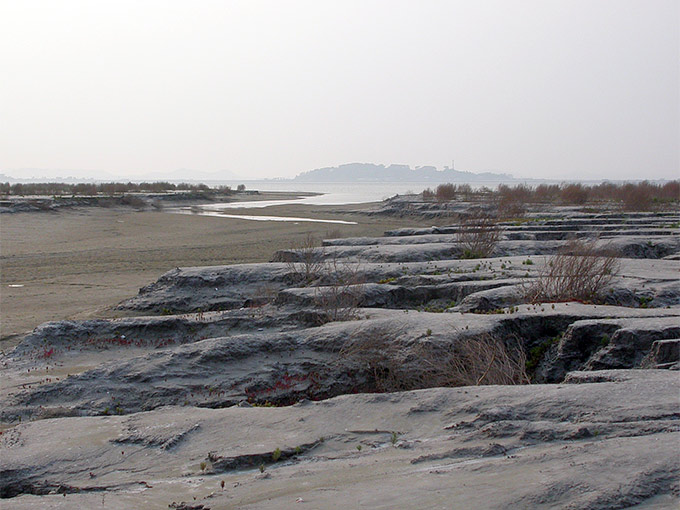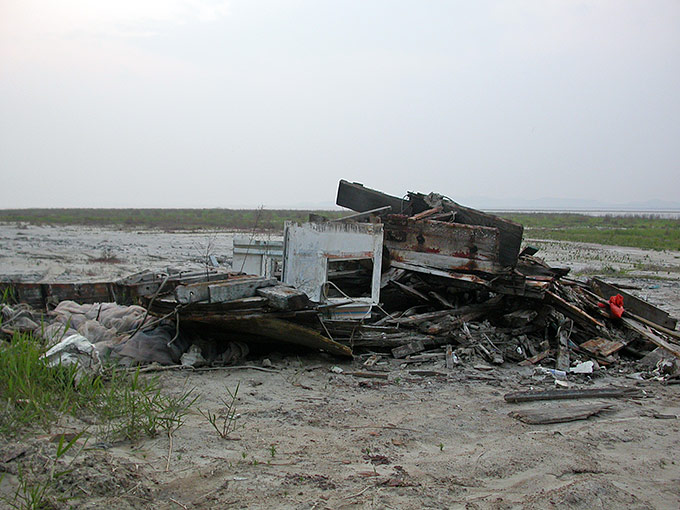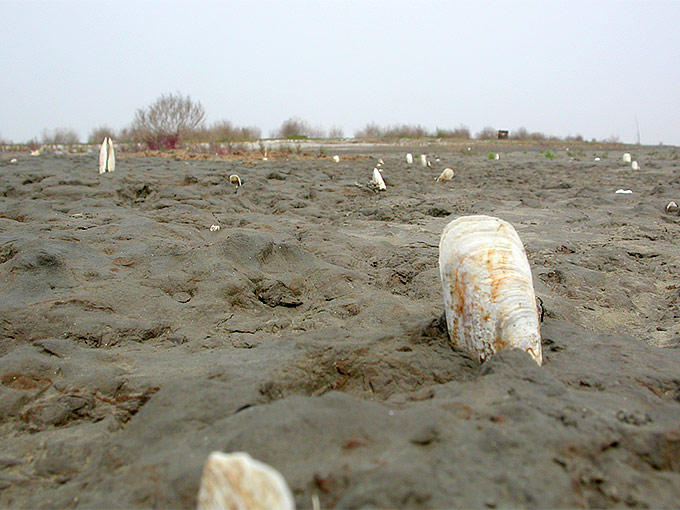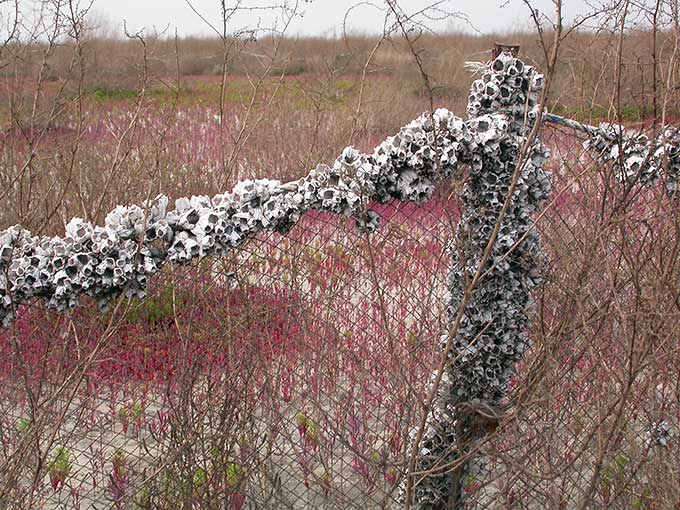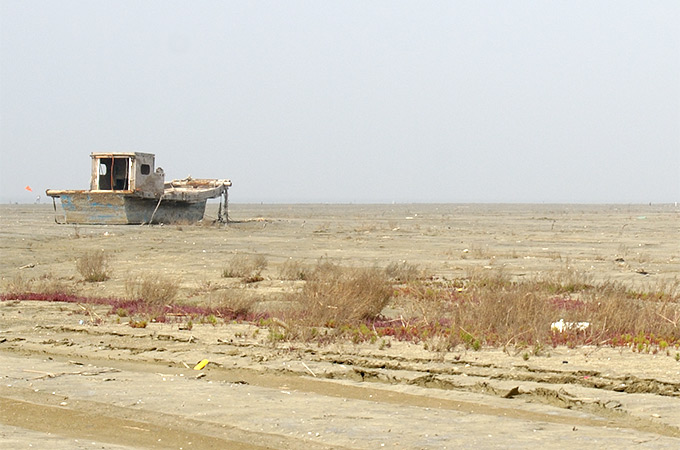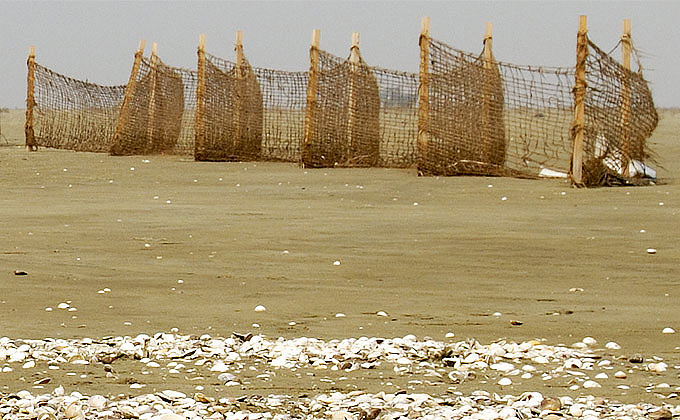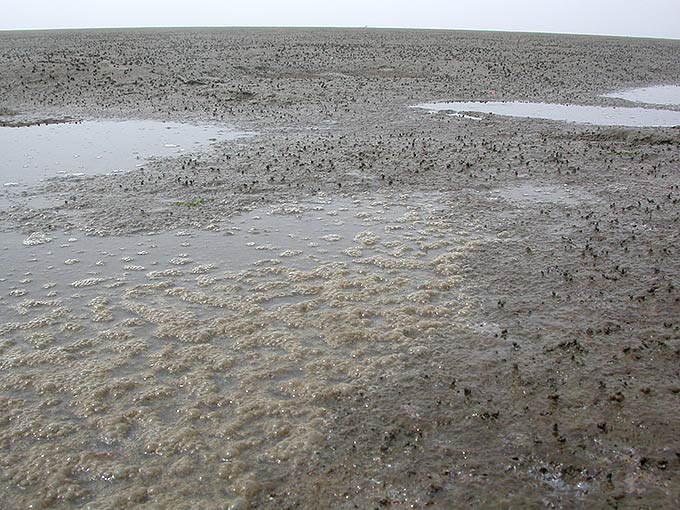This is a summary of count data (and habitat assessment) from the fourth and final spring-tide cycle (May 20th - 24th) of the 2008 Saemangeum Shorebird Monitoring Program (SSMP), a joint initiative of the domestic organization Birds Korea and the international Australasian Wader Studies Group. The SSMP was launched in 2006 to monitor the impacts of the 40,100 ha Saemangeum reclamation (i.e. wetland destruction) project on globally important populations of shorebirds supported by this estuarine system, already recognized as the most important known shorebird site in the Yellow Sea (Barter, 2002). These data will be analysed further, for publication in the SSMP 2008 Report (which will be released in time for consideration at the Ramsar Convention conference to be held in South Korea between October 28th and November 4th), and in other papers, and can be cited freely by others with proper acknowledgement and caveats. The 2006-2008 SSMP will likely be followed by further monitoring effort, tentatively planned for April and May 2010. Already, the SSMP 2006-2008 has proven to be hugely successful in terms of:
gathering data on shorebirds;
objectively measuring the impacts of the Saemangeum reclamation on these shorebirds (in line with Ramsar Resolution 9.15);
identifying and clarifying the very great international importance of the Geum Estuary (now South Korea’s most important shorebird site);
raising awareness of the threats to tidal-flats in Korea and the Yellow Sea; and
in strengthening networks of concerned shorebird and wetland experts.
Following several days of flag-searches and reconnaissance counts, counting for the Fourth Cycle was conducted by a total of 15 people between May 20th and May 24th (with subsequent survey work also conducted on 25th and 26th), through a combination of land-based and boat-based survey-work (latter on May 23rd), covering the Geum Estuary, the Saemangeum area, and Gomso Bay (combined “The Study Site”). Of especial note during the period within the Saemangeum reclamation area were manipulations of tide level (details provided below) which caused a further benthic die-off (from May 23rd) and both followed and coincided with apparently worsening water quality (with algal sludge covering many areas of tidal-flat and large patches of water colored green or brown with algae).
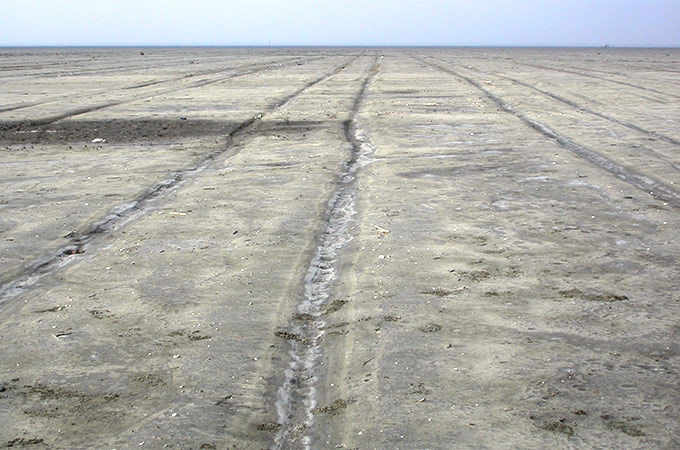
The fourth spring tide cycle of the 2008 SSMP survey-period occurred a few days later than the corresponding spring tide cycles of the SSMP surveys in 2006 (13th – 17th May; Rogers et al. 2006) and 2007 (14th – 22nd May). In addition, stable weather conditions with no northerly headwinds are thought to have caused slightly earlier departure on northwards migration than in 2006 and 2007, with large-scale migratory departures of shorebirds being observed daily from May 20th to 25th. These major departures included e.g. 2342 shorebirds (including 2190 Great Knot Calidris tenuirostris) seen from one observation point in Saemangeum migrating overhead to the northwest on May 20th between 18:55 and 19:26, and 2141 shorebirds (including 1556 Bar-tailed Godwit Limosa lapponica and 396 Whimbrel Numenius phaeopus) seen departing between points NNW and NNE in two hours of observation from one point in the Geum Estuary on May 21st. Pending further analysis, the present summary is based only on counts conducted of birds either feeding or roosting within the Saemangeum reclamation area between May 20th and May 23rd, at Gomso Bay on May 23rd, and at the Geum Estuary on May 24th, and it does not include e.g. counts (all on May 20th) of 5537 shorebirds on relict tidal-flats outside and to the southwest of the Saemangeum seawall; 1429 shorebirds counted in rice-fields near Gyehwado (including 1034 of the Near-threatened Black-tailed Godwit Limosa limosa); 2342 shorebirds migrating overhead at Saemangeum; and high-tide counts conducted at the Geum Estuary barrage. The relatively late scheduling of the 2008 survey, and the relatively early departures need to be considered when reviewing the counts below: sites surveyed likely held fewer individuals of the majority of shorebird species than if they had been surveyed several days earlier. Moreover, the effects of departures on totals seen are likely to have been greater in some species than in others, and are likely greater in the last-surveyed sites (especially the Geum Estuary).
While data are still being processed, and in line with the above, a total of 23,463 shorebirds of 32 species were recorded in the study site during the Fourth Count Cycle, with 16,394 within the Saemangeum reclamation area, 1055 at Gomso Bay, and 6014 in the Geum Estuary. Most numerous species within the study site were Dunlin Calidris alpina (7127), Red-necked Stint Calidris ruficollis (3194), Grey Plover Pluvialis squatarola (2877), Terek Sandpiper Xenus cinereus (2157), Broad-billed Sandpiper Limicola falcinellus (1278), Great Knot Calidris tenuirostris (1218), Mongolian Plover Charadrius mongolus (924) and Whimbrel Numenius phaeopus (908).
Within the Saemangeum reclamation area, counting was conducted over four days (between May 20th and 23rd). Tidal-range was maintained at approximately 1.3 m within the system (as in the Third Count Cycle) until the night of May 22nd/23rd, when closure of sluices on a low spring tide led to the water level being dropped by probably c 1.5 m from high-tide peak, with the sea-gates then either remaining closed or partially opened to allow a further fall in water level on 23rd and 24th. This sudden drop in water level exposed huge new areas of wet mud, and led to a (further) die-off of benthos. Most numerous shorebird species within the reclamation area included Dunlin (6748), Red-necked Stint (2560), Grey Plover (2039, or more than 1% of the Flyway population of the species, based as below, on Wetlands International 2006), and Terek Sandpiper (1331, or almost 3% of the Flyway Population), with 201 or 2% of the osculans Oystercatcher population (with many displaying, indicating breeding) and three Spoon-billed Sandpiper Eurynorhynchus pygmeus (recently upgraded to Critically Endangered) also recorded (with one on 20th and two on 22nd). Disturbingly, despite exhaustive searches, no evidence was found of a late-May influx of Spoon-billed Sandpipers to Saemangeum, although over 20 birds had previously been observed in mid- or late May in both 2006 and 2007. Further observations of note included 354 Kentish Plover Charadrius alexandrinus (with many pairs breeding, and several nests and young seen), three Endangered Black-faced Spoonbill Platelea minor, three Vulnerable Chinese Egret Egretta eulophotes, and South Korea’s (approximately) seventh record of Gull-billed Tern Gelochelidon nilotica. It is clear that, despite massive declines in some shorebird species, the Saemangeum reclamation area still meets several Ramsar Convention criteria for identification as an internationally important estuarine wetland. It is anticipated, however, based on trends made apparent during 2006-2008, that no estuarine species (including e.g. shorebird species like Great Knot and already globally threatened species such as Spoon-billed Sandpiper, Nordmann’s Greenshank, Black-faced Spoonbill and Chinese Egret) will be able to be supported by this system in internationally important concentrations if the degradation and conversion/reclamation of the system continues as planned.
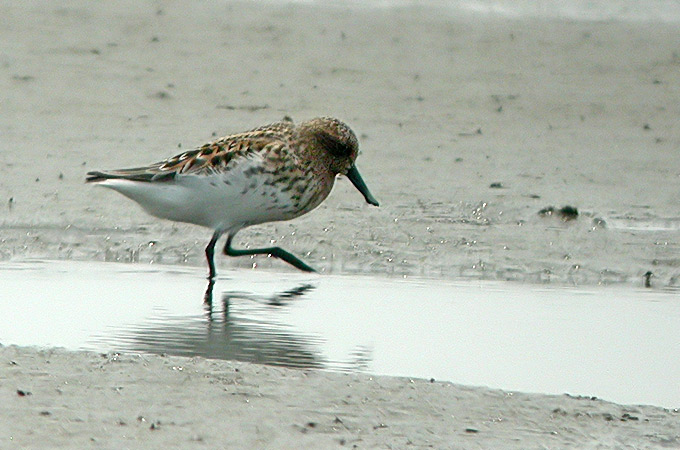
Photo © Nial Moores
At the adjacent Gomso Bay, counting was conducted on May 23rd after a pre-dawn high tide, and a total of 1055 shorebirds was recorded, with most numerous being Whimbrel (314), Terek Sandpiper (248) and Grey Plover (213). Only 40 Dunlin and no Great Knot were found, and no species were recorded in internationally important concentrations.
At the Geum Estuary on May 24th, counting was conducted by teams at Yubu Island and at two main roosts on the mainland during the early morning high-tide, with further counting conducted at the Geum Estuary barrage over the much-lower afternoon high tide. The most numerous species was Broad-billed Sandpiper (1142 or >1% of the Flyway Population, with 1130 of these counted on Yubu Island), constituting a new national high count, and far exceeding the number recorded by the 2006 and 2007 SSMP (e.g. 199 and 323 Broad-billed Sandpiper were recorded at the Geum Estuary and within the study site as a whole respectively in 2007: Moores et al, 2007). In addition, 578 or more than 1% of the Flyway population of Terek Sandpiper, 575 Mongolian Plover (or almost 1% of the combined totals of mongolus and stegmanni subspecies), seven Endangered Nordmann’s Greenshank and 4 now-Critically Endangered Spoon-billed Sandpiper were recorded. Other species of note included a single Gull-billed Tern at Yubu Island and then at the Geum barrage (the latter at least the same individual as seen within Saemangeum on the 23rd) and a single Near-threatened Asian Dowitcher Limnodromus semipalmatus, a species recorded three times during the 2008 SSMP, but probably less than thirty times in South Korea to date.
With fieldwork for the SSMP 2006-2008 now complete, our sincerest thanks go out once more both to all those who have contributed their time and expertise so generously and with such good spirit, and to our funders (most especially the David and Lucile Packard Foundation and private donors). The focus of the SSMP will now shift toward data analysis (and will include additional analysis of the Birds Korea National Shorebird Survey and of nationwide counts of Yellow Sea-staging shorebirds in Australia conducted by the AWSG), and then presentation. The SSMP will continue to describe accurately and with scientific rigour the now apparent and massive impacts of the Saemangeum reclamation on shorebirds (and on other estuarine species as well as human communities), especially since seawall completion on April 21st 2006. Based on the data gathered by the SSMP and the analysis already conducted so far, it remains clear that tidal-flow needs to be urgently increased within the Saemangeum reclamation area (through full opening of the existing sluice-gates, and through the construction of new additional gates), and that the Geum Estuary needs to be designated a Ramsar site at the earliest opportunity. Ramsar designation of the Geum Estuary needs to be made with the long-term aim of maintaining its great importance to biodiversity, its ecological character and its sustainable use – all in line with existing guidelines and resolutions of e.g. the Ramsar Convention and the Convention on Biological Diversity.
Again with thanks to all,
The SSMP Team, Iksan, May 26th 2008.
References
- Barter, M.A. 2002. Shorebirds and The Yellow Sea: Importance, threats and conservation status. Wetlands International Global Series 9, International Wader Studies 12, Canberra, Australia.
- Moores N., Rogers D., Koh C-H., Ju Y-K., Kim R-H & Park M-N, 2007. The 2007 Saemangeum Shorebird Monitoring Report. Published by Birds Korea, Busan.
- Rogers, D.I., N. Moores and P.F. Battley. 2006. Northwards migration of shorebirds through Saemangeum, the Geum Estuary and Gomso Bay, South Korea in 2006. Stilt 50: 73-89.
- Wetlands International. 2006. Waterbird Population Estimates – Fourth Edition. Wetlands International, Wangeningen, The Netherlands
